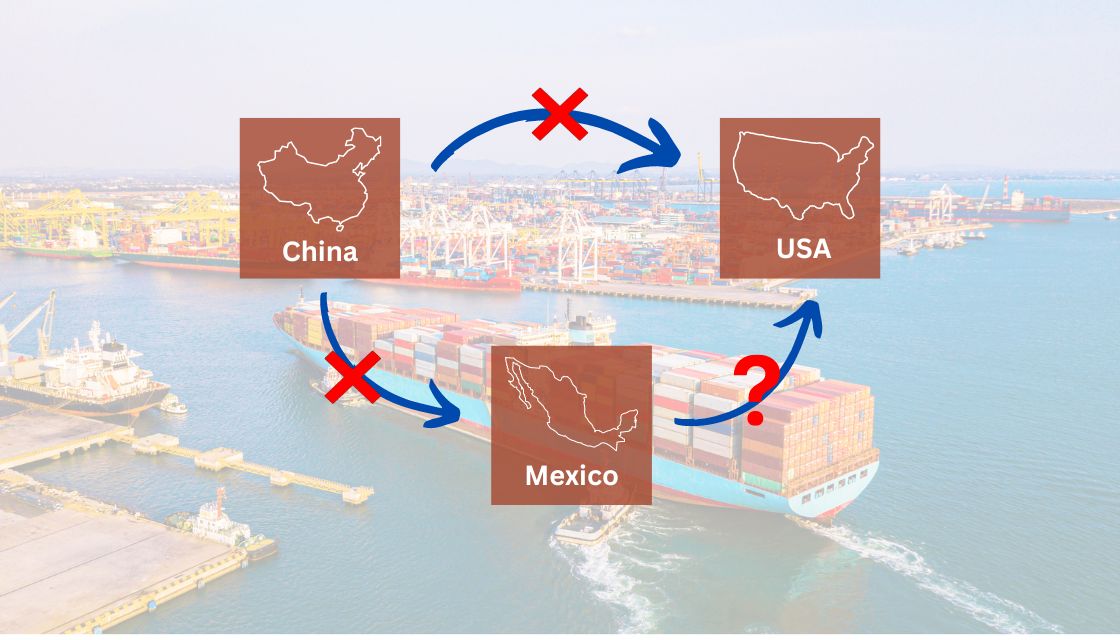Why Evading China Tariffs Through Mexico Won’t Work for Long


For U.S. manufacturers, the once-convenient strategy of using Mexico to avoid China tariffs is becoming more untenable by the day. As Mexico seeks to curb its reliance on Chinese imports and the U.S. clamps down on tariff evasion, businesses are caught in a tightening web of regulations and restrictions.
The message is clear: relying on Mexico as a workaround for sourcing from China is no longer a sustainable strategy. Manufacturers must consider alternative supply chain solutions to ensure resilience in this increasingly complex trade landscape.
Mexico’s Drive to Curb Chinese Imports
Mexico’s new government, led by President Claudia Sheinbaum, is actively prioritizing the reduction of the country’s dependence on Chinese imports, particularly in industries such as automotive, aerospace, and electronics. As The Wall Street Journal reported in October 2024, the Mexican government is encouraging U.S. manufacturers operating in Mexico to find alternatives to Chinese components. The aim is to strengthen domestic supply chains, but this shift poses significant challenges for U.S. companies that have relied on Mexico as a nearshoring hub while still sourcing parts from China.
For example, many high-tech components, such as those used in semiconductors and electric vehicles, are currently sourced from China. Substituting these with locally produced parts is easier said than done. Mexico’s infrastructure is not yet equipped to handle the production of these sophisticated components at scale. The WSJ article highlighted concerns from industry insiders who pointed out that Mexico’s basic infrastructure—such as reliable electricity and water supplies—lags behind what is needed for a full-scale shift in production.
Moreover, even if Mexico could ramp up production, it would take years to develop the local expertise and supply chains needed to replace Chinese imports, leaving U.S. companies facing potential delays, rising costs, and uncertainty. As one executive cited in the article mentioned, “On paper, import substitution sounds great. But execution is a big question mark.”
Increased Scrutiny on Circumventing U.S. Tariffs
While Mexico is working to reduce its dependence on Chinese imports, the U.S. is simultaneously ramping up efforts to close loopholes that allow Chinese goods to enter the U.S. through Mexico. In July 2024, the Biden administration imposed new tariffs on Mexican imports that contain Chinese steel and aluminum, according to another Wall Street Journal report. This move reflects a broader campaign to prevent China from using Mexico as a back door to avoid U.S. tariffs on its goods.
For U.S. companies that have been using nearshoring as a strategy to bypass the tariffs on Chinese goods, this scrutiny creates a new layer of risk. The tariffs, which add 25% on steel and 10% on aluminum, are aimed specifically at products that don’t meet the “melted and poured” requirement in the U.S., Mexico, or Canada. The increased oversight means that companies importing from Mexico now need to ensure full transparency on the origins of their materials.
This development could lead to significant compliance costs and potential penalties for companies that fail to meet these requirements. As one executive mentioned in the WSJ article, the increased imports of Chinese-origin steel have already caused price pressures and plant closures in the U.S. manufacturing sector. The Biden administration’s tariffs are designed to curb this trend, but for U.S. companies relying on Chinese inputs via Mexico, it adds another layer of complexity to supply chain management.
